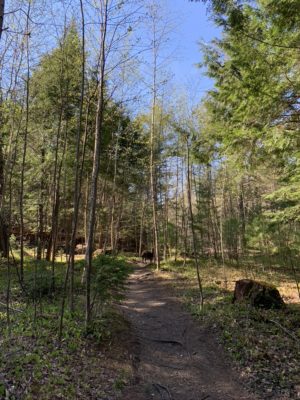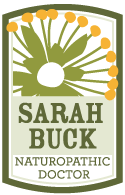Forest Bathing
 Shinrin-yoku, as it’s known in Japan where it was adopted as a viable medical therapy in the 1980’s, has recently gained a lot of popularity in the West for good reason. It’s part of a movement in medicine called Nature Therapy and is defined as “a set of practices aimed at achieving ‘preventive medical effects’ through exposure to natural stimuli that render a state of physiological relaxation and boost the weakened immune functions to prevent diseases”[1]. Sounds pretty good, right?
Shinrin-yoku, as it’s known in Japan where it was adopted as a viable medical therapy in the 1980’s, has recently gained a lot of popularity in the West for good reason. It’s part of a movement in medicine called Nature Therapy and is defined as “a set of practices aimed at achieving ‘preventive medical effects’ through exposure to natural stimuli that render a state of physiological relaxation and boost the weakened immune functions to prevent diseases”[1]. Sounds pretty good, right?
Perhaps because of our culture’s tendency to stay indoors, getting out in nature has become a doctor’s prescription for all sorts of ailments from cancer to ADHD to cardiovascular disease. And because of our love of all things proven by science, there are studies to back up the effectiveness of this seemingly simple activity. But what is it?
Forest bathing is a recreation that requires no bathing suit, or water. It simply requires that you spend time in a forest environment. And if you don’t have access to a forest environment, you can reap most of the benefits by looking at pictures of forests. Seriously!
A review of the literature has shown that spending time (between 40 mins and 2 hours) in the forest can lower blood pressure by about 4-7 mmHg.[2] Additionally, they have measured a shift in people’s autonomic nervous system occurs within 5-7 minutes of forest exposure.[3] The autonomic nervous system is where the sympathetic and parasympathetic branches of our nervous system (NS) are grouped. These branches are popularly responsible for the “fight or flight” (sympathetic) or the “rest and digest” (parasympathetic) actions in our bodies. When we have an excess of sympathetic tone in our NS we experience elevated blood pressure, increased heart rate, anxiety, insomnia, and poor digestion among other things. And when the parasympathetic NS is in control we are in a more relaxed physiological state, we digest our food, our cortisol levels decline, and we experience lower blood pressure. It appears that our autonomic nervous system is responding to the forest! Decreasing the sympathetic response, and increasing the parasympathetic response. What is lacking in these cardiovascular studies is the long-term effects of forest bathing, so does the effect stay with you for days or weeks, or only just hours? They don’t know yet.
Scientists have however been able to measure the longer-term effects of forest bathing on the immune system. Part of the body’s natural immune defense system includes natural killer (NK) cells. Their job is to survey the cells in the body, target, and kill virus- and tumor-infected cells.[4] Studies show an increase in NK cell levels after 2 hours in a forest. The levels are raised about 1.25 – 1.5 times the baseline. The longevity of the forest effects on NK cells is documented and lasts about 1 week for females and up to 1 month for males.1 The effect on NK cells may not be due solely to the sight of the forest, as the cardiovascular studies suggest. Research is finding that the effect on the NK cells relies on the presence of phytoncides, or volatile compounds, including essential oils, from wood.[5] These oils include alpha-pinene, limonene, and cedrol. You can maybe guess which sources these oils come from? The scent that you get from crushing a pine needle or smelling freshly cut fir trees is due to the presence of phytoncides. So, the immune effects (specifically on NK cells) of forest bathing seem to involve more than just pictures of the woods and include smelling the woods. And perhaps by smelling essential oils of cedar, pine, or even lemon, you are be able to get some of the benefits of forest bathing.[6]
One of my favorite activities is walking in the woods, I have been inadvertently forest bathing for years! I love the feeling that I get (increased parasympathetic tone) from just 1-2 miles of wandering amongst the trees. And with a little inspiration from some herbalists I know, I have begun to make forest tea to enjoy either during or after my walks. Forest tea is exactly what it sounds like, when I am out I pick up bits of fallen pine needles, fir tips, spruce twigs, and a little usnea (not an evergreen!) for good measure. I either place these in my pockets to bring home, or I carry a thermos of hot water and they go directly into the thermos! I like to allow them to steep for a long time (30 mins) to bring out the aroma. Then I open my thermos and enjoy the scent of the forest wherever I am! The taste is surprising, it is at once earthy and acidic, likely from the vitamin C that evergreen leaves (needles) contain. It is a delicious way to connect to the forest, bring some phytoncides into your life, and get some of that vitamin C immune boosting power into your day! As with all wild plant gathering, it is so important to know what you are picking up and putting in your mouth. I love the Peterson field guides for the wonderful pictures and descriptions of the plants. (A Field Guide to Medicinal Plants and Herbs of Eastern and Central North America by Steven Foster and James A. Duke.)
Maine’s state flower is the white pine. And living in Maine offers many opportunities to get outside and be exposed to trees and forests. A short 5-15 minute drive out of Portland puts you into areas that have forested walking paths. A bus can even take you there! Walking is optional while in the forests as you can get so many of the benefits from simply enjoying the view.
[1] Song C, Ikei H, Miyazaki Y. Physiological Effects of Nature Therapy: A Review of the Research in Japan. Int J
Environ Res Public Health. 2016;13(8). doi:10.3390/ijerph13080781.
[2] Ideno Y, Hayashi K, Abe Y, et al. Blood pressure-lowering effect of Shinrin-yoku (Forest bathing): a
systematic review and meta-analysis. BMC Complement Altern Med. 2017;17(1):409. doi:10.1186/s12906
017-1912-z.
[3] Hansen MM, Jones R, Tocchini K. Shinrin-Yoku (Forest Bathing) and Nature Therapy: A State-of-the-Art
Review. Int J Environ Res Public Health. 2017;14(8). doi:10.3390/ijerph14080851.
[4] Tsao T-M, Tsai M-J, Hwang J-S, et al. Health effects of a forest environment on natural killer cells in humans: an observational pilot study. Oncotarget. 2018;9(23):16501-16511. doi:10.18632/oncotarget.24741.
[5] Li Q, Nakadai A, Matsushima H, et al. Phytoncides (Wood Essential Oils) Induce Human Natural Killer Cell
Activity. Immunopharmacol Immunotoxicol. 2006;28(2):319-333. doi:10.1080/08923970600809439.
[6] Tsunetsugu Y, Park B-J, Miyazaki Y. Trends in research related to”Shinrin-yoku” (taking in the forest
atmosphere or forest bathing) in Japan. Environ Health Prev Med. 2010;15(1):27-37. doi:10.1007/s12199
009 0091-z.
